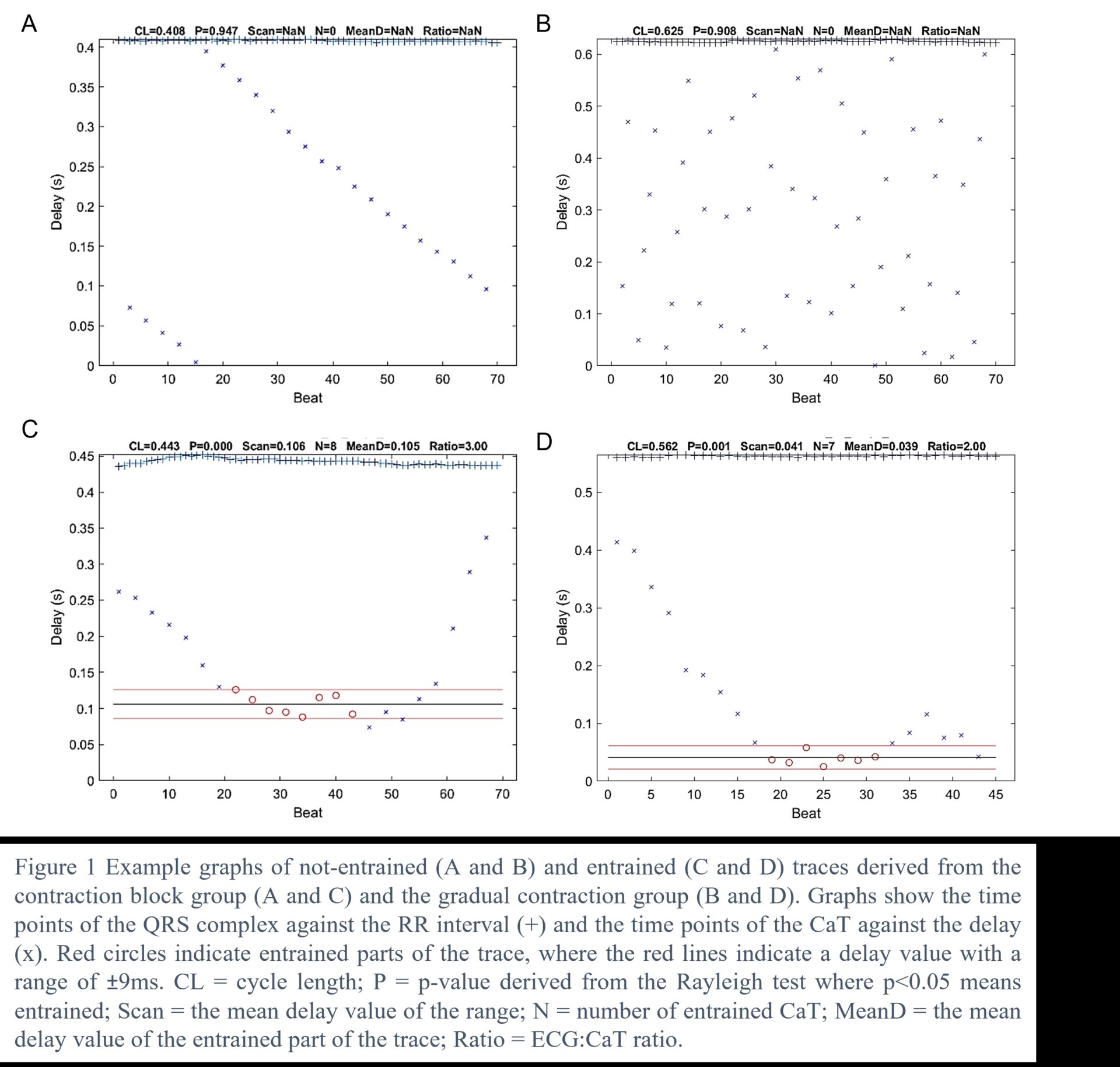The therapeutic effect of engineered heart tissues (EHTs) is only at its full potential once the EHTs integrate into the native myocardium, and thus electrically and/or mechanically couple. However, the electromechanical coupling of EHTs with the host remains a challenge. The electromechanical cues of the heart might be crucial for EHTs to mechano-electrically couple and this might be especially true for the first couple of hours post-implantation (acute phase), which, to our knowledge, has not been studied.
The aim is to investigate whether small EHTs show signs of mechanical and/or electrical coupling during the acute implantation phase.
Small EHTs consisted of a recombinant collagen hydrogel disc (6 mm x 300 µm thick) with commercial human induced pluripotent stem cell derived cardiomyocytes (hiPSC-CMs) (ICell2 CDI) seeded on top (<50.000 cells). Hearts of healthy male NZW rabbits were excised under anaesthesia (0.5 ml/kg euthatal with 500U heparin) and prepared for Langendorff perfusion. Blebbistatin was used to block contraction before implanting Cal520-AM loaded EHTs underneath the epicardium. To measure the effect of ventricular contraction, a balloon was inserted into the left ventricle (LV) and hearts were divided into two groups: 1) constant contraction block (CB) using blebbistatin (N=9 hearts) and 2) graded levels of contraction (GC) achieved by washing off the blebbistatin (N=6). Calcium traces (CaT) were recorded alongside the ECG for approximately 30 seconds every 25 mins using a lightguide and traces were categorized into three timepoints post-implantation: Start (T=0), Early (T=20-50mins) and Late (T=70-100mins). The Rayleigh test (1,2) was used to detect potential entrainment based on the distribution of the phase differences between ECG R-wave and CaT. In recordings with significant tendency towards a single phase, runs of 5 or more CaT with delay from the previous R-wave within a 18ms window were considered entrained. Then, entrained parts of the trace were analysed on RR interval, CaT interval, time from the QRS to the CaT upstroke and the ECG:CaT ratio.
CaT could be recorded for multiple hours post-implantation. Contraction was 1.0±0.3% (mean±SD) in the presence of blebbistatin and increased after wash-out to 34.3±20.3% and 85.2±13.3% in the Early and Late groups, respectively (GC group only). The Rayleigh test showed significant result for some traces (12/65 [18.5%] for CB and 11/35 [31.4%] for GC) and this was equally divided between Early and Late timepoints. Furthermore, it appeared that entrainment occurred intermittently (Figure 1). Further analysis of entrained trace selections did not show a 1:1 coupling with the heart but often 1:3 or 1:4 and occasionally 1:2, indicating that the human EHTs could not follow the fast intrinsic rate of the rabbit heart.
These data indicate that EHTs show periodic entrainment when engrafted into myocardium in the first hours post-implantation. Entrainment was seen in absence of contraction and therefore contraction seemed not essential. One potential underlying mechanism could be ephaptic coupling and this hypothesis is currently being tested using a mathematical model. The early phase coupling indicated here may be important for the long-term survival and therapeutic potential of EHTs.

